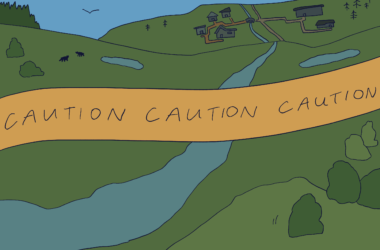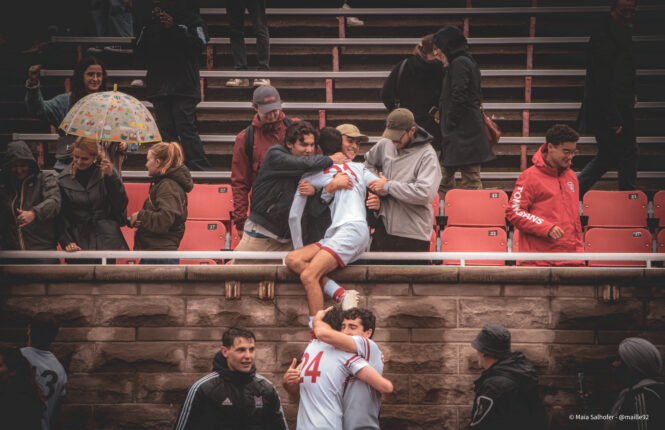 Edward Burtynsky
Edward BurtynskyJust how much have humans changed the planet? Edward Burtynsky’s series of 56 photographs, titled Oil, answers that question far better than any academic or researcher ever could. Oil shows just how much we rely on the precious resource, with pictures grouped into three chapters: extraction sites and refineries, car and transport culture, and the end of oil—the waste products, which include abandoned oil rigs and old cars.
But what the exhibit doesn’t show is the progression of Burtynsky’s career that led him to these photographs. When he first started as a landscape photographer, he would spend hours at a time staring at complex, detailed, and chaotic landscapes, until the frame and light were just right. Since then, his photos have held the same luminous and perfectly exposed quality, and he continues to use a large depth of field to capture extraordinary detail.
For Burtynsky, the pristine, untouched landscape is too simple. Raised in Saint Catherine’s, Ontario, by a father who worked at the local General Motors plant, Burtynsky was as familiar with the inside of an automotive plant as he was with the Canadian wilderness. Photographing such untouched spaces began to feel “out of sync” for Burtynsky.
His fascination with man-made landscapes developed, at first, with pictures of trains and railroad cuts.
“To be more true to my time is to begin to show our interventions and intersections into that landscape,” Burtynsky said of his railway photographs. The difference between early photographs of Canadian landscapes with rail lines intersecting them, and Burtynsky’s work, is that he has never presented altered landscapes as a feat of human ingenuity. “The line was to be a meditation: neither a glorification, nor an indictment.”
The progression of Burtynksy’s career can be described in his continual search for a place bigger and more awe-inspiring than the last: the roots of Oil go back to his experiments with open-pit mines, and it was during this phase in Australia that he began to photograph from helicopters, lending new perspective to his work.
After mines, Burtynsky spent 17 years photographing quarries in eight different countries, developing his arranging skills with their intriguing and complex geometry. Eventually he made his way to China, where he photographed the Three Gorges Dam, rows and rows of Shanghai’s skyscrapers, and the mountains of coal which power the country. China also introduced Burtynsky to recycling on a scale he had never before seen. Describing images he took in a village of workers stripping computers apart, Burtynsky is both reverential and alarmed by the disassembly and reassembly of all these raw materials, many of them risky and toxic. China was also where Burtynsky photographed factories on a scale unimaginable to most Canadians.
A fascination with the extraction of raw materials, their use, and eventual disposal, brought Burtynsky face to face with the largest and most contentious resource of our time: oil. Conceptually and visually, the photographs in Oil show the decades that Burtynsky spent contemplating man-made landscapes. The pictures are so detailed that, standing up close, it is hard to believe they were not painted with a very fine brush, and ironically, it is the minutiae of the pictures that creates a powerful sense of scale. A 10-tonne truck, tires and doors fully visible, is merely a speck on an open mine kilometres across.
Make no mistake, the photographs are beautiful, but they are alien. In one, red rivers of tailings flow through banks of earth like lava, creating an image that looks prehistoric. Rows and rows of old tires in a northern California dump look like a post-apocalyptic nightmare. By finding places that look like they couldn’t possibly exist on this planet, Burtynsky is questioning the romantic, sublime landscapes that we are so accustomed to seeing in photographs. The life cycle of oil is also exposed in detail. Photographs of car and transport culture are eerily devoid of empathetic human subjects, and the people in the photographs clearly have no connection to the photographer, if they are even aware of his presence. Burtynsky refers to NASCAR races as the “modern Roman amphitheatre,” and he uses light and movement in some of the photos to make a car convention have all the chaos of a children’s carnival.
Burtynsky’s mastery of scale and perspective, combined with his ability to find unimaginably massive industrial landscapes, has resulted in a series of photographs that expose how humans have irreversibly altered the landscape around them. That, and the fact that they are simply beautiful photographs, makes this an exhibit not to be missed.
Oil runs until January 8 at the McCord Museum. For more information visit www.mccord-museum.qc.ca








